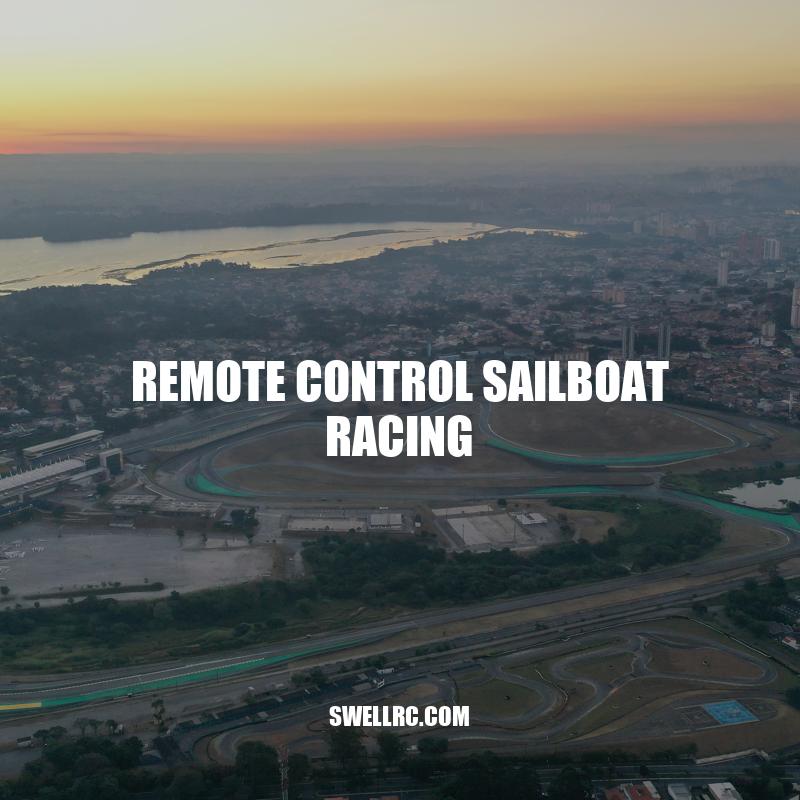Remote Control Sailboat Racing: A Challenging and Exciting Sport
Remote control sailboat racing is a growing sport that combines the challenges of boating, sailing, and remote control technology. Fans of the sport enjoy the excitement of competing against other sailors, as well as the challenge of maneuvering their sailboats using only a remote control. The concept of remote control sailboat racing is simple – participants sail their boats around a course and try to be the first to cross the finish line. However, there are several factors that make the sport more challenging than it may appear at first glance. Remote control sailboat racing has a set of rules and regulations that are important for participants to understand before getting involved in the sport. For example, participants must adhere to strict weight and size restrictions for their boats, as well as specific dimensions for the racecourse. There are also rules around the use of remote controls, including the range and frequency of the controllers. These rules are designed to ensure a fair and safe competition for all participants.
The rules and regulations of remote control sailboat racing
Participants must adhere to strict weight and size restrictions for their boats. Specific dimensions for the racecourse must be followed. There are rules around the use of remote controls, including the range and frequency of the controllers. These rules are designed to ensure a fair and safe competition for all participants.
Remote control sailboat racing has a set of rules and regulations that are important for participants to understand before getting involved in the sport. These rules include a number of restrictions and requirements to ensure that all races are safe and fair. Sailors should be familiar with these regulations before entering a race. Some websites provide in-depth guides to these rules, such as the International One Metre Class Association (IOMICA) website. Additionally, there are many stores that sell sailboats which meet these requirements, including boats made of wood, fiberglass, or plastic.
What are the weight and size restrictions for remote control sailboats in racing?
The weight and size restrictions for remote control sailboats in racing may vary depending on the specific racing class or association rules.
Types of remote control sailboats used in racing
- The most common types of remote control sailboats used in racing are monohulls and multihulls.
- Monohulls are typically more stable and easier to maneuver, while multihulls are faster but can be more challenging to control.
- Some sailboats are made of wood, while others are made of modern materials like fiberglass or plastic.
Different types of remote control sailboats can be used in racing, with each type having its own set of advantages and disadvantages. Here is a table comparing the two most common types of sailboats used in remote control sailboat racing:
| Type of Sailboat | Advantages | Disadvantages |
|---|---|---|
| Monohulls | More stable and easier to maneuver | Slower than multihulls |
| Multihulls | Faster than monohulls | More challenging to control |
Sailors typically choose the boat that best suits their skill level and experience. Higher-end boats are often made of modern materials, like fiberglass, which makes them faster and more durable. While some sailors may prefer the traditional feel of a wooden sailboat. Some websites, like the IOMICA website, provide resources for purchasing different types of boats for remote control sailboat racing.
What are the advantages and disadvantages of using monohull and multihull remote control sailboats in racing?
Advantages of monohull remote control sailboats include stability and simplicity, while disadvantages include slower speeds and less maneuverability. Advantages of multihull remote control sailboats include speed and agility, while disadvantages include complexity and instability in high winds.
The skill and strategy involved in remote control sailboat racing
- Remote control sailboat racing requires a high level of skill and strategy from participants.
- Sailors must understand the rules and regulations of the race they are participating in to compete effectively.
- They need to be familiar with their boats and understand their strengths and weaknesses.
- Sailors must also be able to read wind and water conditions and adjust their tactics accordingly.
- Timing and coordination skills are critical when maneuvering boats around the course accurately and quickly.
- Problem-solving skills are key since sailors need to be able to adjust to unexpected changes in conditions.
- Remote control sailboat racing also involves strategizing to overtake competitors on the course.
- Sailors need to think on their feet and quickly analyze the situation on the course to make the best decisions possible.
- Practicing and honing these skills through regular racing and training sessions is critical for success in the sport.
To improve their skills and learn new strategies, sailors can seek resources online. The AMYA website provides a list of registered clubs and locations where remote control sailboat racing takes place. The site also includes a forum where sailors can ask questions and receive advice from more experienced racers. Additionally, there are many books and articles available that provide tips and advice for sailors looking to improve their racing skills.
What resources are available for sailors to improve their remote control sailboat racing skills?
Online forums, instructional videos, books, and organized events are some of the resources available for sailors to improve their remote control sailboat racing skills.
The future of remote control sailboat racing
As remote control sailboat racing continues to grow in popularity, the future looks bright for this exciting sport. With advancements in technology, remote control sailboats are becoming more advanced and easier to control, making the sport accessible to more people. The increasing popularity of the sport is evident by the numerous clubs and sailboat classes available online, offering a welcoming community of experienced racers and beginners to hone their skills and compete.
In the future, it is expected that remote control sailboat racing’s widespread popularity will attract more sponsors and funding, leading to bigger events and greater prizes. The growing availability of remote control sailboats and equipment will also make it easier for people to get involved in the sport. Increased access to resources will make it easier for newcomers to learn the complicated rules and strategies needed to compete, leading to a more diverse community of sailors.
As remote control sailboat racing continues to evolve, new and exciting opportunities for sailors of all skill levels will emerge. With technological advancements and a growing community of enthusiasts, the future of remote control sailboat racing is looking bright. Whether you’re an experienced racer or a newcomer to the sport, there has never been a better time to get involved in this exciting and challenging activity.



